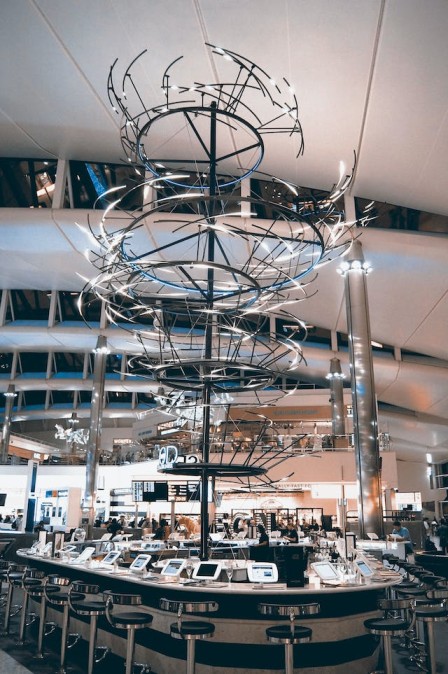Primitive Technology Reimagined: Building Tomorrow’s Solutions The term “primitive technology” may appear contradictory in the rapidly changing world of technology. However, the simplicity and inventiveness of early equipment and procedures are frequently the sources of invention. In this investigation, we examine the idea of primitive technology and how developing tomorrow’s solutions might be made possible by rethinking its guiding principles.
Table of Contents
Understanding Primitive Technology in the Modern Context
Primitive Technology Reimagined: Building Tomorrow’s Solutions The term “primitive technology” describes the rudimentary tools and methods that early people used to survive. In the twenty-first century, we live surrounded by state-of-the-art technology. However, there’s a growing movement to rethink antiquated ideas in order to deal with modern issues.

Harnessing Nature’s Wisdom in Design
Using the knowledge of nature can be learned a lot from archaic technologies in the fields of engineering and design. Take biomimicry as an example, wherein the elegance and effectiveness of natural structures serve as inspiration for contemporary solutions. Through the reworking of archaic design concepts, engineers may produce environmentally friendly, robust, and sustainable solutions.
For instance, designing structures with termite mounds as inspiration to provide natural ventilation and temperature regulation.
Sustainability Through Simplicity

Primitive Technology Reimagined: Building Tomorrow’s Solutions Primitive technology has a strong emphasis on sustainability and simplicity. Rethinking antiquated methods promotes a change to sustainable practices in a world facing environmental difficulties. When developing long-lasting solutions, simplicity becomes a guiding concept, whether it be for energy-efficient technologies or environmentally responsible construction techniques.
Using thatched roofing techniques, for instance, can help cut carbon emissions and provide natural insulation.
Primitive Technology Reimagined Survival Skills in the Digital Age
It makes sense to rethink basic survival skills as we navigate an increasingly digital world. The principles of survival—adaptability, resourcefulness, and resilience—can be applied to the difficulties of the digital era, even though we might not be going on wild food hunts. Innovative problem-solving and flexibility in the face of rapid technical breakthroughs are inspired by primitive technology concepts.
Creating digital literacy curricula that impart skills for adapting to a constantly evolving technological environment is one example.
Craftsmanship in a High-Tech World
Primitive Technology Reimagined: Building Tomorrow’s Solutions In the high-tech world, craftsmanship—a trademark of antiquated technology—is making a comeback. Reimagining archaic handicraft entails fusing cutting-edge technologies with conventional abilities. This combination produces one-of-a-kind, handmade solutions that honour the human touch in the age of digital technology.
For example, combining conventional woodworking methods with 3D printing to create custom furniture.
Community and Connection
Primitive Technology Reimagined: Building Tomorrow’s Solutions Strong links to the society were essential to the survival of primitive cultures. Rethinking this element of antiquated technology entails using technology to promote sincere human connections. In an increasingly linked world, creating solutions with an emphasis on human connection strengthens the social fabric through cooperative digital platforms and community-driven innovation centres.
As an illustration, consider developing online environments that support deep dialogue and group problem-solving.
Sustainable Building Inspired by Primitive Wisdom
Primitive Technology Reimagined: Building Tomorrow’s Solutions We are seeing a return to interest in traditional building methods that put sustainability first in the field of construction. Eco-friendly materials and energy-efficient designs are prioritised in the construction of buildings, which range from timber-framed structures built using traditional joinery techniques to cob houses inspired by ancient mud structures.
In a future when locally sourced materials and tried-and-true construction techniques are used, picture our urban landscapes incorporating the knowledge of traditional builders. This reduces the influence on the environment and promotes a closer relationship with nature.
Primitive Agriculture for a Sustainable Tomorrow
Reliance on organic farming and permaculture in our forefathers’ agricultural traditions is spurring a resurgence in sustainable agriculture. By combining antiquated techniques like low-tech irrigation systems, companion planting, and rainwater collection, contemporary farmers are finding creative ways to increase food yields without endangering the environment.
Primitive Technology Reimagined: Building Tomorrow’s Solutions Imagine a world in which farmers adopt the tenets of agroecology and collaborate with the natural world to build robust, self-sustaining ecosystems. We can create a world where food production is abundant and environmentally friendly by rethinking prehistoric agriculture.
Tech Minimalism: Efficiency Through Simplicity
Primitive Technology Reimagined: Building Tomorrow’s Solutions In the rapidly evolving field of technology, the “less is more” mentality is becoming more and more popular. Reimagining Primitive Technology promotes the creation of sturdy, energy-efficient, and simple gadgets. From wearable technology modelled after antique jewellery to smartphones with longer battery lives, the goal is to maximise utility while reducing environmental effect.
Imagine a digital environment where devices are made to last a long time and be repaired, minimising technological waste and encouraging a more sustainable use of technology.

Primitive Wisdom in Innovative Design
Primitive Technology Reimagined: Building Tomorrow’s Solutions There is a movement in design to embrace the practicality and aesthetic appeal of primitive crafts. In order to produce goods that endure, designers are rethinking the past. Examples of this include furniture that draws inspiration from traditional joinery and clothing that is inspired by old textile techniques.
Imagine a time in the future where the objects that adorn our living spaces are thoughtfully made, combining the modern convenience of functionality with the timeless beauty of the primitive.
Wilderness Survival Skills for the Modern Explorer
Not only are primitive survival skills useful in the past, but they are also applicable in the present era. Reconnecting with nature is becoming more and more popular, from star-based navigation methods to making tools out of natural materials. These abilities are beneficial in emergency scenarios and promote self-reliance; they are not limited to adventurers.
Envision a society in which people are equipped with the information necessary to survive in the wild, resulting in a population that is more resilient and adaptive and able to handle unforeseen obstacles.
Conclusion: Building Tomorrow’s Solutions with Primitive Wisdom
To sum up, rethinking outdated technology is a step forward towards a future where innovation is based on sustainability, human connection, and simplicity rather than a step backward. We may create long-lasting solutions by integrating the ideas of prehistoric technology into the design, sustainability, craftsmanship, survival skills, and community components of our contemporary technological environment.
Let us draw inspiration from the simplicity of our past to inform the complexity of our future as we rise to the challenges of the future. Reimagining primitive technology is about bringing innovation along with the timeless values that have sustained humankind throughout history, not about rejecting progress.






